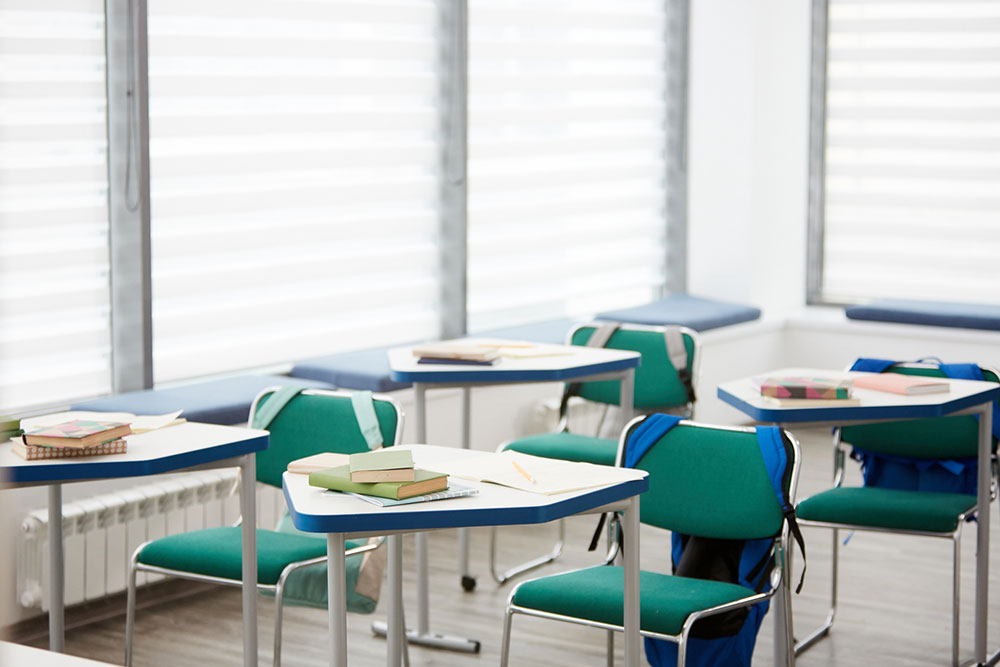7 things to consider for choosing the right school furniture

Buying school furniture is more than just a monetary purchase—it is a decision that impacts the teaching and learning process in the classroom. After all, it is a major investment in the students, teachers, and staff. While features like safety and longevity of school furniture should be the key considerations when choosing school furniture, a few other factors determine if the chosen pieces align with the school’s vision, curriculum, and culture.
1. Quality and value
Classroom furniture is an expensive investment. Additionally, the pieces one chooses will be exposed to heavy wear and tear, as students can be reckless while using the furniture. Considering this possibility, one must look for furniture made from quality materials that can stand the test of time. Ideally, classroom furniture should last for 15 to 20 years. One should also work with a manufacturer specializing in making school furniture, as they are more likely to create thoughtfully designed pieces that do not invite excessive maintenance and replacement in the long run.
2. Functionality
The furniture purchase decision heavily rests on the age group and teaching methods. For instance, small, colorful, and easily adjustable chairs and tables might be ideal for Pre-K students. On the other hand, for senior students, desks that provide optimal support for note-taking may work better.
Apart from the basics, it is best to look for furniture that can be multi-functional in a classroom setting. For example, one can consider pieces like whiteboards with storage units behind them or student desks that can be comfortably joined for huddle sessions or work as a standalone table for independent working. Focusing on functionality while choosing furniture can positively impact students’ learning experiences and help them get the most out of the resources provided to them.
3. Visual appeal
The furniture one invests in goes a long way in making an impression on current and future students, parents, and faculty members. While it is not the sole factor when making a purchase decision, paying attention to it can help the school build a positive image and improve enrollment. So, it is best to look for furniture that matches the school’s vision to create an aesthetically pleasing environment. This is also a good time to consider the overall design of the classroom and incorporate school colors into the fray.
4. Ergonomics
Uncomfortable furniture is bound to be distracting for students, forcing them to keep shifting in their seats or fidgeting with their tables. It may also give rise to aches and pains, leading to increased absenteeism. The way to solve this problem is to look for comfortable and ergonomic furniture for both students and faculty members. One can refer to height guides for tables and chairs for each age group to determine what works best.
5. Maintenance and customer service
Finicky furniture items that keep falling apart can not only be a safety hazard for students but also increase the admin team’s work by constantly demanding time, money, and effort. With so many moving parts in a school, administrators have their hands full all year round. Furniture maintenance and supply chain issues only add to these worries. The solution is to pick pieces that are easy to maintain. So, while choosing furniture, one should work with a manufacturer that provides good after-sales services, including warranty and reselling.
Implementing good furniture maintenance strategies in the school may also be worthwhile. For instance, one must consider placing benches in spacious and dry places, avoiding excessive sun or heat exposure, cleaning all surfaces routinely (as recommended by the manufacturer), and disinfecting the surfaces regularly.
6. Budget
One must not overlook the practical constraints while investing in school furniture. Going overboard in the furniture-buying process is easy, so it is important to create a reasonable purchase budget beforehand. One must stick to this plan throughout the buying process and be mindful of the pieces they pick. One must also consider multiple manufacturers, ask for quotations, and inspect product quality before making the final decision.
It is also important to remember that the world of education is never static. As times and teaching styles change, there will always be evolving needs for different types of classrooms and furniture. As a result, schools may end up investing a significant amount of money and effort to keep up with changing requirements. To prepare for such changes , it is advisable to keep a rolling budget to meet these needs when the time arises.
7. Student well-being
This is a crucial factor to consider when buying school furniture. One of the ways to help students feel more comfortable and empowered in a classroom setting is by offering flexible seating options. The best part is that none of this needs to be disruptive. For instance, one can consider options like traditional chairs with full-back support, stack stools, futons, lap desks, and butterfly chairs, among other pieces, which students can choose from in class.


